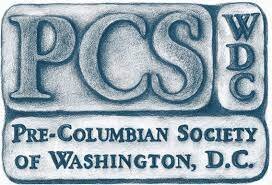Transformation by Fire: Mexica Funerary Cremation Rituals by Ximena Chavez-Balderas, PhD Candidate, Tulane University.
This meeting will be held at the Charles Sumner School, 17th & M Streets, N.W., Washington, D.C.
The meeting starts with refreshments at 6:45 pm and the lecture begins at 7:15 pm.
The Great Temple of Tenochtitlan was the final resting place for certain elite individuals. Their bodies were cremated and their remains were deposited in urns. The archaeological excavations of the Templo Mayor Project recovered seven urns containing cremated bones from five individuals, along with numerous burial goods. These findings revealed that funerary rituals were more complex than what the historical sources described, depending on the identity, social status, and cause of death of the deceased, as well as body symbolism. In this talk, Chavez Balderas will explore these findings; present the different types of cremation rituals and activity areas associated with the practice; discuss the meaning of fire as a transforming element; address the symbolism of bones; and note the possible use of cremated remains as relics for consecrating ritual space. In addition, she will discuss the symbolism and the extraordinary diversity of associated funerary goods.
Ximena Chavez Balderas is a bioarchaeologist with the Templo Mayor Project. She specializes in funerary archaeology, sacrificial practices, mortuary treatments, and archaeozoology. She earned her BA from the Escuela Nacional de Antropolgia e Historia. Her MPhil was awarded by the Universidad Nacional Autonoma de Mexico and her MA is from Tulane University. She was the primary curator of the Templo Mayor Museum between 2001 an 2007. She has received three INAH national awards, has presented more that 50 lectures and papers, and has published thirty-plus articles. Currently, she is a Dumbarton Oaks Junior Fellow.

